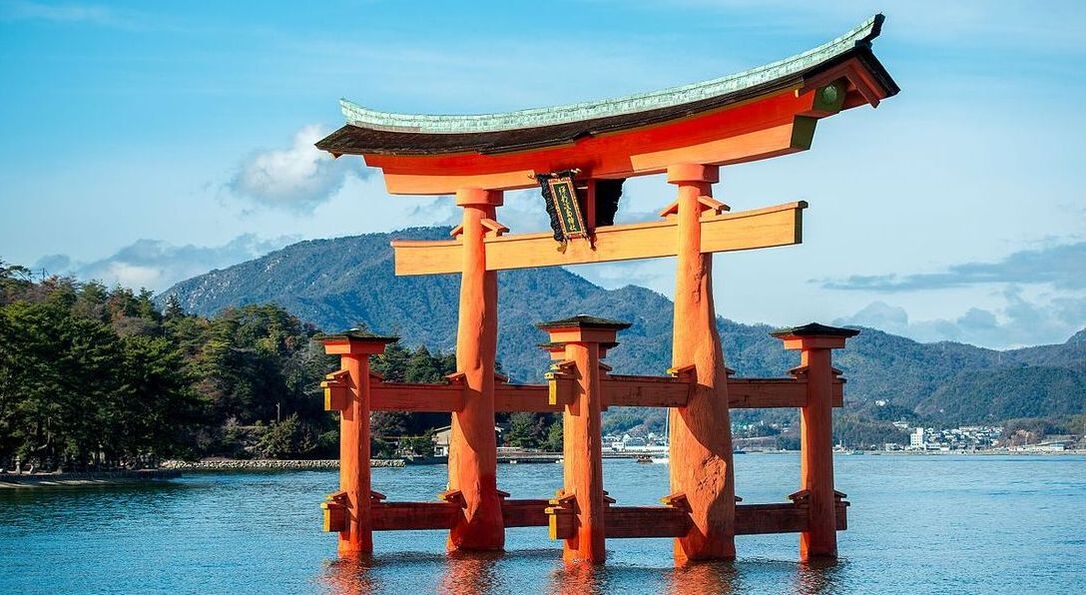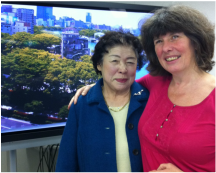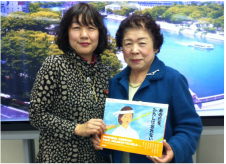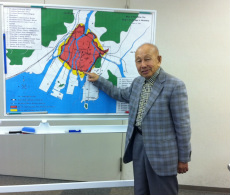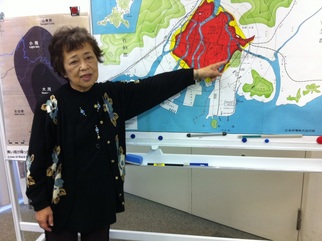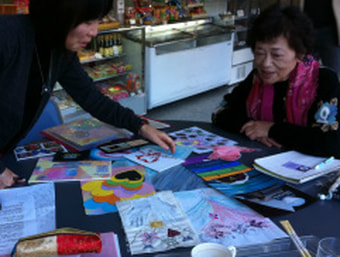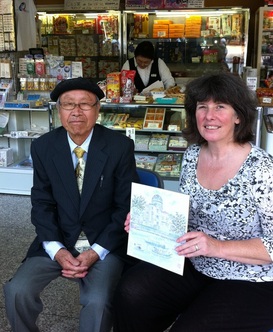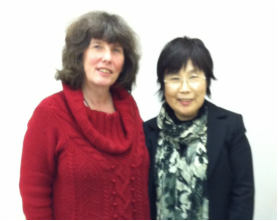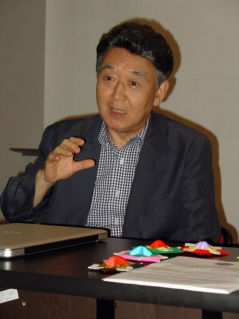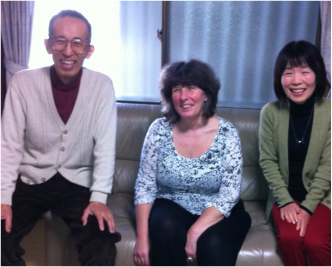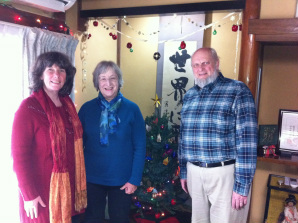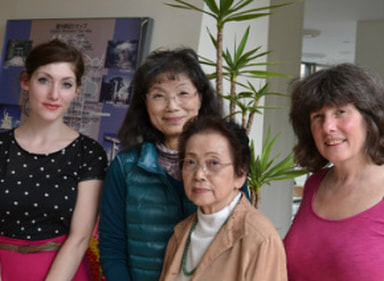Introducing Hibakusha who shared their stories with me
In November 2012, I traveled to Hiroshima to spend some time meeting people and learning about the history of Hiroshima, the Hibakusha (A-bomb survivors) and the dedicated community of which they are a part. I stayed at the World Friendship Centre (www.wfchiroshima.net), a welcoming home-from-home whose staff and friends organised a schedule for me, including a guided tour of the Peace Park by atomic bomb survivor Enya-san, meetings with Hibakusha and other significant members of the Hiroshima Peace Culture Community, and an interpreter when required (usually the WFC's wonderful Michiko-san).
I took with me the beginning of the Hope in the Heart Collection of images, created by individuals wishing to communicate their empathy and support to the Hibakusha. The people with whom I shared the images were greatly moved by these visual messages, and in return contributed some of their own to the growing collection.
The remarkable people who shared their stories with me have found a sense of relief and meaning in coming together with other survivors of the bombing, and telling those of us who cannot imagine what they went through about those experiences. They continue to speak up in the passionate hope that raising awareness of what happened to them and their city will contribute to the evolution of a world in which there is no longer any threat of nuclear attack. Without exception, they asked me to pass on the message to my fellow UK citizens to please stand up against nuclear weapons, and help to ensure that what happened to them in and after 1945 is never allowed to happen again.
You can read some of their stories in full by clicking on the links below, and learn about the history of nuclear weapons, from the first explosion in Hiroshima to the present day, here
I took with me the beginning of the Hope in the Heart Collection of images, created by individuals wishing to communicate their empathy and support to the Hibakusha. The people with whom I shared the images were greatly moved by these visual messages, and in return contributed some of their own to the growing collection.
The remarkable people who shared their stories with me have found a sense of relief and meaning in coming together with other survivors of the bombing, and telling those of us who cannot imagine what they went through about those experiences. They continue to speak up in the passionate hope that raising awareness of what happened to them and their city will contribute to the evolution of a world in which there is no longer any threat of nuclear attack. Without exception, they asked me to pass on the message to my fellow UK citizens to please stand up against nuclear weapons, and help to ensure that what happened to them in and after 1945 is never allowed to happen again.
You can read some of their stories in full by clicking on the links below, and learn about the history of nuclear weapons, from the first explosion in Hiroshima to the present day, here
Kiyomi Kohno was 14 years old when the bomb was dropped. She told me her story, and her daughter Nobuko (above, with her mother) interpreted.
Kiyomi-san has written and illustrated a moving book, "I Will Never Forget That Day", with text in both Japanese and English. The painting at the top of the page is taken from the book.
for Kiyomi's full story, click here. You can see her deliver her testimony, with reference to the book, here.
Kiyomi-san has written and illustrated a moving book, "I Will Never Forget That Day", with text in both Japanese and English. The painting at the top of the page is taken from the book.
for Kiyomi's full story, click here. You can see her deliver her testimony, with reference to the book, here.
|
Enya Setsuko, aged five at the time of the attack, points to her home on a map of the area. She was buried under rubble and her mother pulled her out. As an adult she became a teacher of children with additional needs, and took care of her mother, who had saved her life, until her death in her late 90s. Enya-san now devotes time to telling her story to raise awareness of the destructive power of nuclear weapons and promote World Peace.
For Enya's full story, click here |
|
Hiroshi Hara was thirteen when the atomic bomb destroyed his city. Before his death in 2019, he painted over 3,500 watercolour pictures of the Atomic Bomb Dome using water from the river in which he saw the bodies of the dead floating at that time. He called this "the Water of Souls" and told me that he painted the scene over and over again to comfort the souls of those who died there. He regularly gave paintings to people who shared his wish for a world free of nuclear weapons. You can read about Hiroshi-san and see more of his paintings here |
|
Keiko Ogura was eight on 6th August 1945, and her life was spared because she did not go to school that day. Her school was destroyed and many of her school friends killed or badly injured.
Despite life-long nightmares about her experiences, Keiko-san built a successful career, has had several books published and founded Hiroshima Interpreters for Peace, a voluntary organisation that helps to educate visitors about the city's Peace Park and Peace Memorial Museum. Keiko-san has traveled to the USA on a number of occasions to meet dignitaries and tell her story to varying groups. You can learn more about Keiko-san here and watch her giving her moving testimony here. |
|
Hiroshima film maker Masaaki Tanabe was seven years old at the time of the bombing. He was evacuated to his grandmother's house only days before his opulent home, situated very close to the epicentre, was destroyed and his mother, father and baby brother killed. He has created a series of films that reconstruct Hiroshima to show it as it was before the attack using computer-generated images. He has also written a book based on his experiences, "Born at Ground Zero", with text in both Japanese and English. You can read more about Masaaki-san here and see the trailer to the first of his remarkable films here. |
|
Soh Horie (aged five at the time of the bombing and possessing vivid memories from that tender age) is a proud grandfather, cherry-tree tender, eco-campaigner and master carpenter. Soh-san has been attending English conversation lessons at the World Friendship Centre for a number of years, and when we met I was honoured to be the first person to whom he told his story in English.
(For Soh-san's full story, plus a short video of him sharing that story with me, click here) Pictured with us is Michiko Yamane -World Friendship Centre Chairperson, and my friend, interpreter and guide and during my time in Hiroshima. |
|
With JoAnn and Larry Sims, Volunteer Directors of the World Friendship Centre (www.wfchiroshima.net) and welcoming hosts during my stay. They have now returned to the USA, and new directors, have taken the reins. Until recently WFC provided a B&B "home away from home" for travelers wanting to learn about Hiroshima, They also still support the Hibakusha according to the wishes of WFC's founder, Barbara Reynolds and offer many services to travellers and visitors to Hiroshima. |
|
During a brief visit to Nagasaki, I met Mutsuko Yoshida, who gave me a guided tour of the city's Peace Museum, introduced me, my daughter and son-in-law to Etsuko Nagano, a survivor of the atomic bombing of Nagasaki, and interpreted her story for us. Etsuko-san was 16 when Nagasaki was bombed. Her younger brother and sister were killed and she has found it hard to bear the burden of surviving them and witnessing the horrors that surrounded her. After 50 years, she began to find relief in telling her story to high-school students and other interested parties. |
Myself and my daughter Chloe with Mutsuko and Etsuko-san
|
Hope in the Heart CIC is not affiliated with any political party or organisation. We support the community of Hiroshima in its belief that nuclear weapons must be abolished on humanitarian grounds, in the context of every person's human right to a safe and just life.
